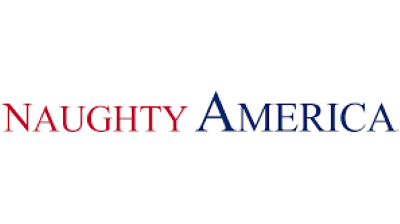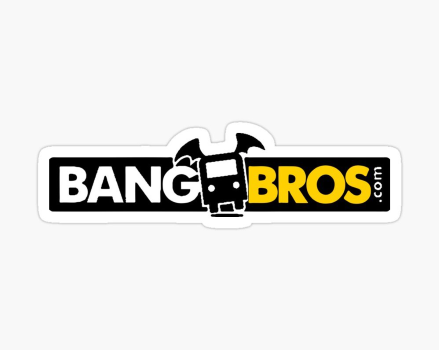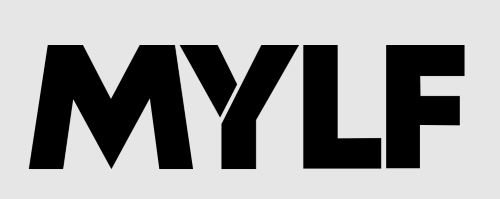There has been a powerful movement in the music industry known as Riot Grrrl, which emerged in the 1990s and was fueled by feminist ideals and DIY ethics. This movement not only challenged gender norms within the music scene but also provided a platform for women to express their anger and frustration towards patriarchal society. Today, this movement has evolved into Girlcore, which continues to revolutionize the music industry with its unapologetic portrayal of femininity and defiance against societal expectations.

Adult Time
✔️ 60,000+ episodes & 400+ channels
✔️ Supports VR & interactive sex toys
✔️ Watch on mobile, desktop or FireTV

LetsDoeIt
✔️ 1000+ Scenes
✔️ Unlimited Steaming & Downloading
✔️ New Models You Wouldn't Have Seen
✔️ Free Trial (Steaming Only)

Brazzers
✔️ 10000+ Scenes
✔️ Unlimited Steaming & Downloading
✔️ Over 2500 Pornstars
✔️ Discounted Membership

Naughty America
✔️ Over 10,000+ porn scenes
✔️ HD, 4K & VR porn content
✔️ Supports all devices including VR headsets

Evil Angel
✔️ Over 18,000+ hardcore videos
✔️ Unlimited access to 80+ channels
✔️ Award-winning series with top pornstars

MamaCitaz
✔️ 800+ Scenes
✔️ Unlimited Steaming & Downloading
✔️ Exclusive Latina Models
✔️ Free Trial For Two Days
The Roots of Riot Grrrl
The Early Days: Challenging Masculine Dominance in Punk Rock
The origins of Riot Grrrl can be traced back to the early days of punk rock in the late 1970s and early 1980s. As punk exploded onto the scene, it was dominated by male artists who often portrayed sexist attitudes towards women both on stage and offstage.
But this did not deter female musicians from making their mark on the scene. Women like Patti Smith, Joan Jett, Siouxsie Sioux, Debbie Harry, and The Slits paved the way for other female musicians to enter the world of punk rock.
However, despite their contributions, these women still faced discrimination within the overwhelmingly male-dominated scene. They were often relegated to being mere backup singers or sex symbols rather than respected artists in their own right.
The Rise of Feminist Punk Bands
In the late 1980s, a new wave of feminist punk bands emerged, such as Pussy Galore and L7. These bands incorporated feminist themes into their music and used shock tactics to challenge societal norms surrounding gender and sexuality.
But it was not until the early 1990s that Riot Grrrl truly took off with the formation of Bikini Kill by lead singer Kathleen Hanna. Along with drummer Tobi Vail, guitarist Billy Karren, and bassist Kathi Wilcox, they created loud, unapologetic music that spoke out against sexism, racism, homophobia, and other forms of oppression.
Riot Grrrl wasn’t just about making music; it was also a way for women to connect and support each other through shared experiences. They organized meetings, published zines (small self-published magazines), and held DIY concerts where female artists could perform without fear of judgment or harassment.
The Principles of Riot Grrrl
Empowerment Through Self-Expression
One of the core principles of Riot Grrrl is empowerment through self-expression. The movement encouraged women to express themselves creatively without being limited by societal expectations or stereotypes.
This principle can be seen in the lyrics of many Riot Grrrl songs that discussed issues like sexual assault, body image, and identity. Bikini Kill’s song Suck My Left One addresses rape culture while Sleater-Kinney’s Little Babies tackles the pressure on women to conform to traditional roles imposed by society. And, for those looking to save money on their xvideos red subscription, xvideos red ratings offer a great discount.
By using their voices and talents as a form of rebellion and expression, these female musicians challenged patriarchal structures within the music industry and beyond.
Inclusivity and Intersectionality
Another key principle of Riot Grrrl was inclusivity and intersectionality. The movement aimed to create space for all women, regardless of race, sexuality, or gender identity.
This was a significant departure from the second-wave feminist movement of the 1970s that focused primarily on issues faced by white middle-class women. Riot Grrrl recognized that different forms of oppression intersect and affect individuals differently based on their identities.
Moreover, this principle also extended beyond just female artists; it included fans as well. This inclusive approach allowed people who may have traditionally been marginalized within punk culture, such as queer individuals and people of color, to find a sense of belonging within the Riot Grrrl community.
DIY Ethos
Riot Grrrl embraced DIY (do-it-yourself) ethos – creating without relying on traditional channels like major record labels or mainstream media outlets. This allowed female musicians to control their own narratives and break free from the often sexist expectations imposed by the music industry.
Through zines, self-produced albums, and grassroots organizing efforts, Riot Grrrl bands were able to reach out directly to their audience without having to conform to market trends or labels’ demands.
This DIY approach not only enabled these artists to maintain creative autonomy but also fostered a sense of community among them and their fans. Whenever you’re in the mood for some steamy fun, nsadating.net has got you covered with a variety of free sex games on iOS that will leave you wanting more.
The Evolution: From Riot Grrrl to Girlcore
The Legacy of Riot Grrrl
Though short-lived in its initial form, Riot Grrrl’s impact has had a lasting effect on the music world. It paved the way for many female musicians today and inspired other movements such as Emo feminism and Queercore.
It also challenged societal norms surrounding femininity and rebellion through its unapologetic attitude towards sexuality and anger. Many argue that without Riot Grrrl, we would not have artists like Taylor Swift or Halsey using their platforms to speak out against sexism and embrace feminist ideals.
The Birth of Girlcore
As the years went by, Riot Grrrl evolved into what we now know as Girlcore. This movement has taken the principles of its predecessor but expanded them to include a more diverse range of identities and experiences. And if you’re ready for the ultimate interactive adult gaming adventure, look no further than the best of lsi – a comprehensive review of life selector to dive into a world of unlimited possibilities and customizable scenarios.
Girlcore embraces not only feminism but also queer theory, anti-racism, body positivity, and other social justice issues. It recognizes that gender is fluid and challenges traditional definitions of femininity and masculinity.
Moreover, Girlcore also acknowledges that women are not just passive participants in the music industry; they can be producers, sound engineers, managers, and more. The movement aims to break down barriers within the industry and create opportunities for underrepresented groups.
How Girlcore is Revolutionizing Music and Challenging Gender Norms
Creating a Safe Space for Marginalized Identities
One of the most significant impacts of Girlcore on the music world is its creation of safe spaces for marginalized identities. These spaces allow artists from all walks of life to express themselves freely without fear of judgment or discrimination.
This inclusivity extends beyond just female artists; it includes non-binary individuals, people of color, members of the LGBTQ+ community – anyone who may have traditionally been excluded from mainstream music culture.
By creating these welcoming environments, Girlcore has opened doors for many artists who may have otherwise struggled to find acceptance in the music industry.
Promoting Intersectional Feminism Through Music
Intersectionality is a crucial element of both Riot Grrrl and Girlcore. However, with Girlcore’s emphasis on inclusivity and diversity, this principle has become even more integral to the movement.
Many Girlcore bands use their music to explore intersectional feminist themes such as racism, transphobia, ableism, classism, and more. By bringing these issues to the forefront, they are not only challenging societal norms but also educating their audience and promoting meaningful discussions about important social justice topics.
Breaking Down Gender Stereotypes
Girlcore bands embrace diversity in gender expression, rejecting traditional notions of femininity and masculinity. This rejection of gender stereotypes is evident in both their music and image.
The band Screaming Females’ lead singer Marissa Paternoster often sports a masculine appearance with short hair and baggy clothes while still performing feminine vocals. The band G. L. O. S. S (Girls Living Outside Society’s Shit) features transgender members who reject traditional gender roles and challenge cis-normative expectations within punk culture.
By breaking down rigid definitions of gender, Girlcore artists are paving the way for more fluid expressions of identity within the music industry.
The Future of Girlcore
As we look towards the future, it is clear that Girlcore will continue to shape the music world and challenge societal norms surrounding gender. With its emphasis on inclusivity, intersectionality, and DIY ethics, this movement has created a strong foundation for change and progress within the industry.
Moreover, as society becomes more aware of social justice issues and strives for equality, it is likely that Girlcore will gain even more traction – providing a platform for underrepresented voices to be heard and celebrated.
In 2024, we can only hope that Girlcore will have achieved its ultimate goal – creating an inclusive space where all artists can thrive regardless of their identities or backgrounds. To read a detailed VRConk Review, visit Avid Reader Musings for an in-depth look at this virtual reality company’s products and services. And as long as there are people fighting for equality through powerful music and activism, we have faith that this movement will continue to revolutionize the music industry for years to come.
What makes Girlcore stand out from other online platforms for female empowerment and self-expression?
Girlcore stands out from other online platforms for female empowerment and self-expression because of its unique approach to celebrating and embracing all aspects of womanhood. Unlike other platforms that focus on specific issues or causes, Girlcore embraces the multifaceted nature of being a woman and provides a space for women to freely express themselves, share their stories, and connect with like-minded individuals. Girlcore actively promotes diversity, inclusivity, and body positivity, making it a truly empowering and inclusive community for all women.
How can users get involved in the Girlcore community and contribute to its mission?
Users can get involved in the Girlcore community by becoming a member on their website, following them on social media, and attending their events. They can also contribute to the mission by sharing their reviews and recommendations, participating in discussions and debates, and supporting female-driven projects and businesses.


